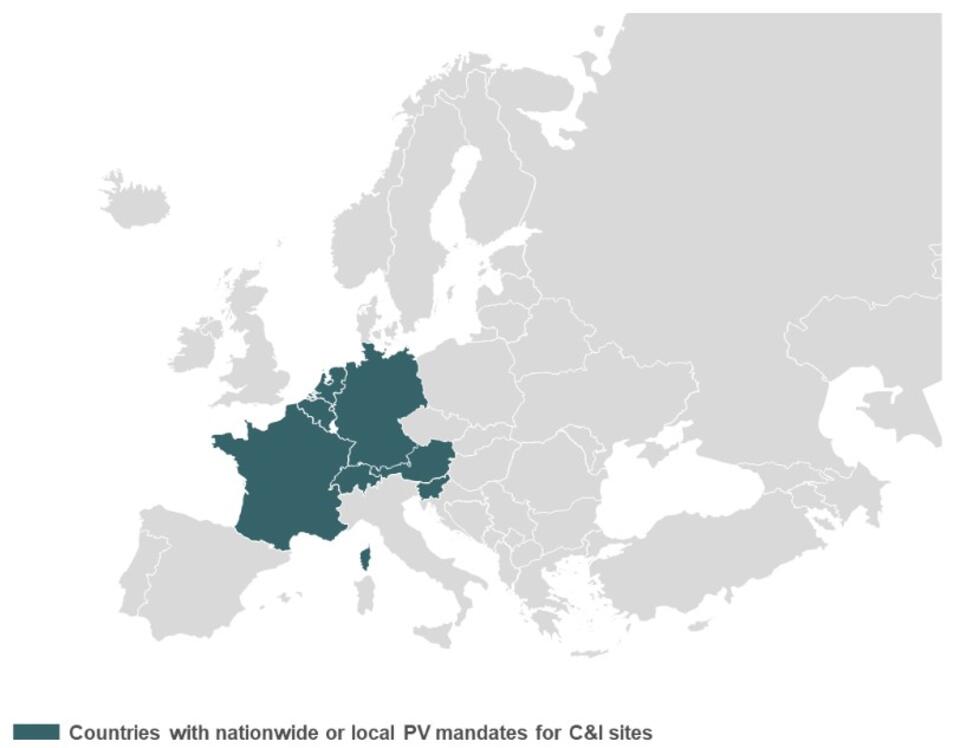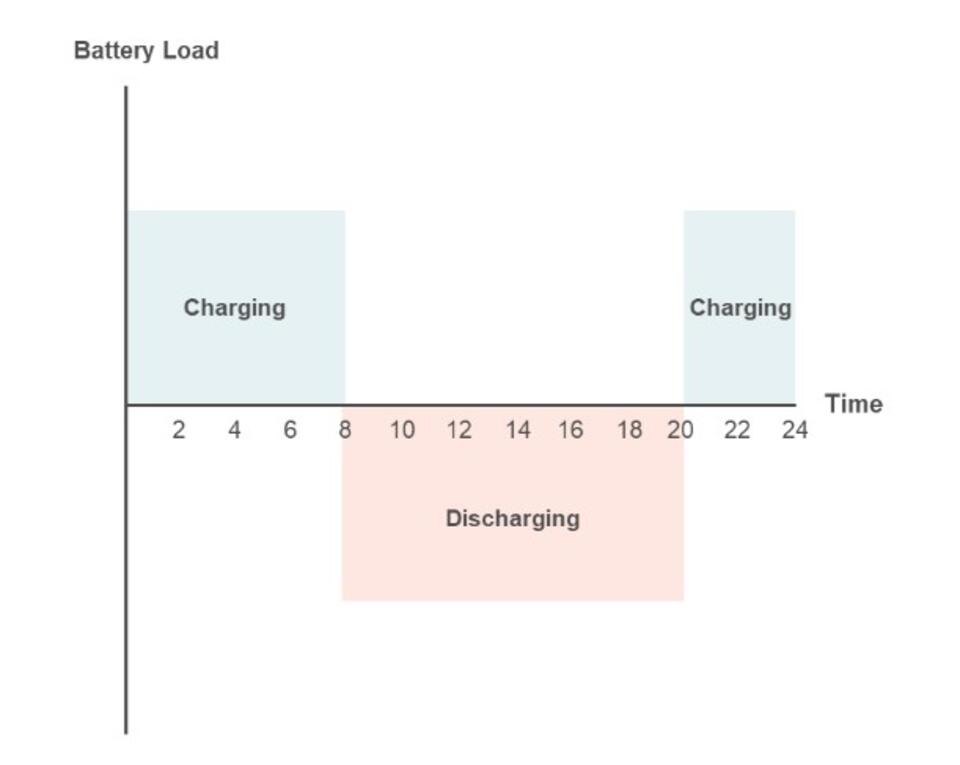Maximizing the potential of local generation: The value of onsite solar programs in the European market (Part 2)

By Miltos Giannakopoulos, Manager, Distributed Clean Energy Advisory and Albina Abaspahic, Clean Energy Analyst
Key drivers
Onsite solar programs have gained momentum in complementing corporations’ decarbonization efforts, offering multifaceted benefits from regulatory, financial, and commercial perspectives:
Regulatory framework: An increasing number of European countries have introduced mandates for the installation of onsite solar technology in existing and/or new commercial & industrial (C&I) sites. France was the pioneer in such efforts by implementing a 50% onsite solar coverage requirement for outdoor car parks with an area greater than 1,500 sqm and gradually tightening its solar PV obligations, including new and existing C&I buildings. The Netherlands and Belgium (Flanders) have also introduced solar PV regulations for C&I buildings that meet certain specifications (roof size, electricity demand, etc.). Finally, although some countries lack nationwide regulations, local municipalities such as Berlin have taken the initiative and have introduced their own PV mandates.

Cost effectiveness: Companies that develop onsite solar strategies benefit from reduced operational expenses, specifically by avoiding non-commodity rates. By bypassing those non-energy costs, such as transmission and distribution fees, taxes, and levies - which can account for up to 60% of the total electricity price – businesses can see immediate savings on their energy bills. Additionally, onsite solar programs help industries secure access to clean energy at a fixed rate for the next 10-20 years, reducing their exposure to a volatile electricity market.
Brand reputation: Onsite solar implementation strategy provides a way to showcase credible decarbonization action. The close proximity between electricity generation and consumption demonstrates a tangible effort by businesses towards sustainability and a green transition. This visible commitment can enhance brand reputation, helping companies differentiate from competitors.
Main challenges
Although the commercial onsite solar market has seen significant development over the past few years, three key barriers threaten to impede its future success in the European market:
Grid connection: Although behind-the-meter solar installations aim to reduce a site’s reliance on the electricity grid, onsite technologies remain connected to the network. Therefore, most European countries require producers to apply for a grid connection and notify the relevant Distribution Network Operator (DNO) of their intention to install solar panels on their premises. The grid connection application aims to record all technologies connected to the electricity network and monitor the excess electricity exported back to the grid (during periods of non-activity by the site). The increasing number of onsite solar projects has placed a significant burden on the relevant authorities that must review a growing number of those applications. As a result, many of them have introduced additional costs and technical requirements for onsite solar producers. Thus, careful consideration of all these restrictions is needed to optimize the capacity and self-consumption rate of the installation and avoid negative effects on the economics and timeline of onsite solar programs.
Structural integrity: As mentioned above, rooftop installation is the most widely used and cost-efficient typology for onsite solar programs. However, even if a business has identified sufficient space for onsite generation, the age and construction type of the roof can pose barriers. The structural integrity of the building can heavily affect the economics of the project, especially if reinforcement work must be conducted. Therefore, the specifications of the roof must be considered at the early stages of the program to allow for precise cost estimation or identification of alternative typologies (carport or ground mounted).
Landlord engagement: One of the main advantages of onsite solar systems is that corporations can install renewable technologies close to their activities, enhancing the locality of their decarbonization actions. This process is very straightforward for sites that businesses own but it can be more complicated for leased properties. In such cases, landlords must sign a land use/lease agreement with the business (or the developer) to permit the deployment of onsite solar installation on their premises. Early engagement with landlords and a thorough analysis of the benefits they may get from the project are key to the success of these programs.
The role of battery storage
The integration of onsite solar systems with battery storage solutions can help corporations even out the peaks and troughs of site energy demand and maximize the efficiency of renewable generation (peak shaving). However, the high upfront costs of distributed batteries have, so far, limited their financial viability and wide application in the onsite solar European market. Therefore, businesses are exploring additional income streams to make storage solutions financially sustainable. Specifically, in the countries with the relevant legal framework, batteries can be used for energy arbitrage and ancillary services:
I. Energy arbitrage: This process involves charging batteries using electricity from the grid when prices are low (off-peak hours) and selling back the stored energy when prices are high (peak hours)

II. Ancillary services: Storage systems can be used by grid operators to quickly respond to the need for network stabilization by providing balancing and supporting services such as frequency response. This process can increase the grid’s stability and maintain a constant supply of electricity.
The combination of reduced peak shaving, energy arbitrage, and ancillary services can help onsite battery solutions prove their cost effectiveness in commercial and industrial applications.
Conclusion
Onsite solar technology can help businesses reduce their carbon emissions, achieve cost savings, and enhance their brand reputation while ensuring compliance with regulatory mandates.
An experienced advisor can help businesses explore various typologies and contract structures, integrate with storage solutions, and address potential pain points early to maximize the benefits of those systems.
If you’d like to explore how onsite solar and storage solutions can help your company reduce costs and carbon emissions while enhancing operational efficiency, Trio is here to help. Please visit our Contact Page to connect with our advisors or send an email to the following experts:
Miltos Giannakopoulos
Manager, Distributed Clean Energy Advisory
miltos.giannakopoulos@trioadvisory.com
Albina Abaspahic
Clean Energy Analyst
albina.abaspahic@trioadvisory.com
